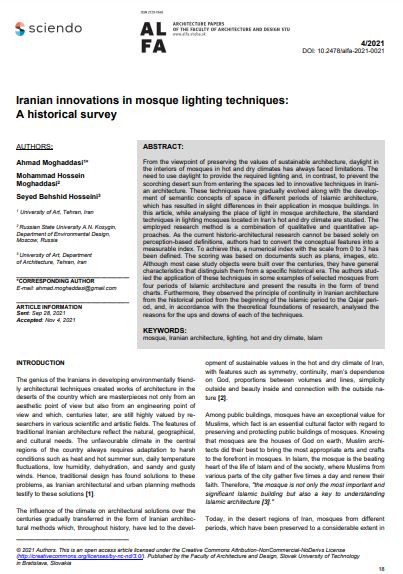
From the viewpoint of preserving the values of sustainable architecture, daylight in
the interiors of mosques in hot and dry climates has always faced limitations. The
need to use daylight to provide the required lighting and, in contrast, to prevent the
scorching desert sun from entering the spaces led to innovative techniques in Iranian architecture. These techniques have gradually evolved along with the development of semantic concepts of space in different periods of Islamic architecture,
which has resulted in slight differences in their application in mosque buildings. In
this article, while analysing the place of light in mosque architecture, the standard
techniques in lighting mosques located in Iran’s hot and dry climate are studied. The
employed research method is a combination of qualitative and quantitative approaches. As the current historic-architectural research cannot be based solely on
perception-based definitions, authors had to convert the conceptual features into a
measurable index. To achieve this, a numerical index with the scale from 0 to 3 has
been defined. The scoring was based on documents such as plans, images, etc.
Although most case study objects were built over the centuries, they have general
characteristics that distinguish them from a specific historical era. The authors studied the application of these techniques in some examples of selected mosques from
four periods of Islamic architecture and present the results in the form of trend
charts. Furthermore, they observed the principle of continuity in Iranian architecture
from the historical period from the beginning of the Islamic period to the Qajar period, and, in accordance with the theoretical foundations of research, analysed the
reasons for the ups and downs of each of the techniques.
I agree to the terms outlined below:
You agree to upload and assign Mosqpedia Database the rights to use the content worldwide and in perpetuity across all current and future media platforms. Mosqpedia Database may edit, copy, adapt and translate your contribution.
The content will be distributed under the Creative Commons Attribution-Deed – Attribution-NonCommercial-NoDerivatives 4.0 International – Creative Commons
All data will be stored in line with data protection regulations.